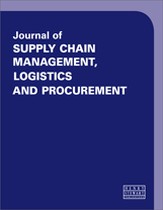Understanding and managing future risk: Case study on managing supply chain data
Abstract
Data management is essential to ensure any company’s supply chain is avoiding unnecessary risk and delivering the lowest possible cost. Small to mid-size companies may not have the resources to operate available software tools; however, this analysis remains critical to their success. This paper discusses Knape & Vogt Manufacturing’s solution to managing its supply chain data. The solution was the creation of a commodity matrix that allows for data from multiple sources to be combined for analysis in key areas. By evaluating the supply base, the company is able to better understand the division of spend within a commodity and begin work to mitigate risk within a commodity supply base. Evaluating suppliers on a macro level provided the ability to make more informed sourcing decisions and identify opportunities for supplier improvement. Furthermore, it provided the ability to review the supply chain at a part level to work to resolve identified issues and develop cost savings opportunities. This micro level of evaluation included analysis of lead time, minimum order quantities (MOQ), economic order quantities (EOQ), safety stock, price breaks and total cost of ownership (TCO) calculations. As a final component to the commodity matrix, a quote evaluation tool was created to bring consistency in how suppliers are being evaluated through the organisation. The commodity matrix resulted in the ability to easily apply the fundamental principles of supply chain management.
The full article is available to subscribers to the journal.
Author's Biography
Michael Hoeksema is supply manager at Knape & Vogt Manufacturing in Grand Rapids, Michigan. Knape & Vogt (KV) is a global leader specialising in the design, manufacture and distribution of functional hardware, office and healthcare ergonomics and storage-related components for original equipment manufacturers, speciality distributors, hardware chains and major home centres. Michael is a graduate of Davenport University with a degree in business management. Additionally, he holds a certificate in supply chain management from Michigan State University. At Knape & Vogt, Michael currently serves as the plastics commodity manager, assists with product development for KV’s sliding door hardware line as well as oversees the MRO/Indirect spend. Prior to his time at KV, he had 12 years’ experience in supply chain management in merchandising and importing roles.
Citation
Hoeksema, Michael (2019, December 1). Understanding and managing future risk: Case study on managing supply chain data. In the Journal of Supply Chain Management, Logistics and Procurement, Volume 2, Issue 2. https://doi.org/10.69554/CYBF5613.Publications LLP
